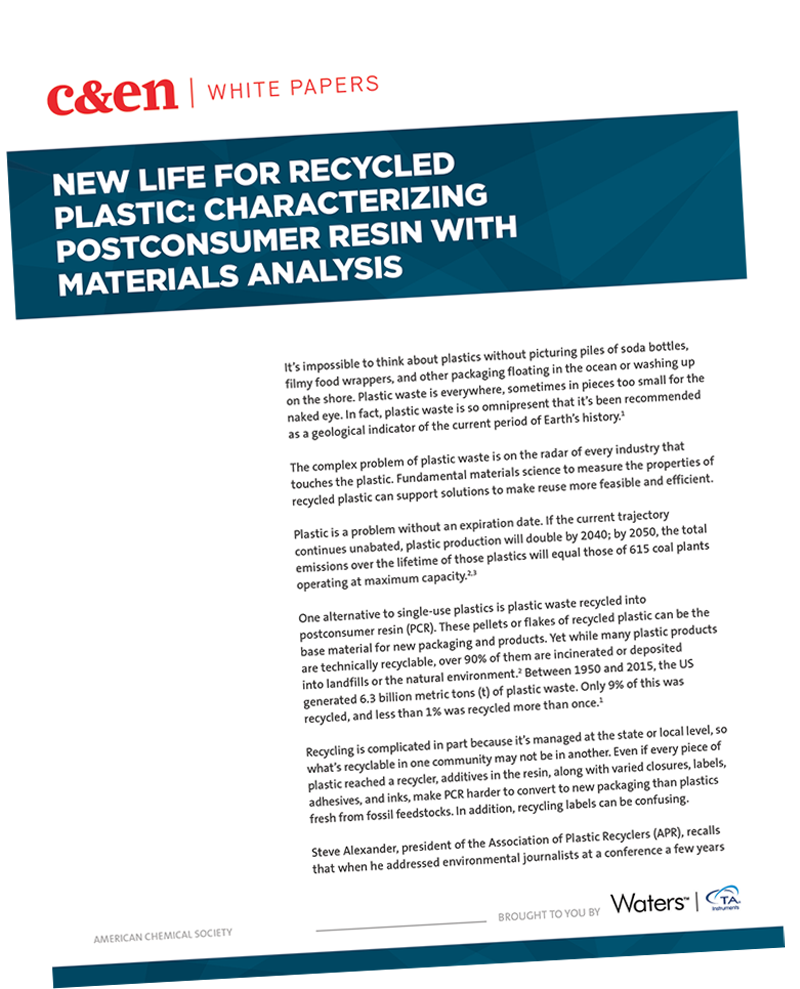

While many plastic products are technically recyclable, more than 90 percent of them are incinerated or deposited into landfills or the natural environment. Stakeholders all along the plastics value chain face pressure to increase the percentage of post-consumer resin (PCR)—pellets or flakes of recycled plastic—in their products. Consistency issues between and within batches of PCR feedstock make this material challenging to process reliably. This whitepaper highlights the current challenges in plastics recycling, describes sources of variability in PCR feedstocks, and explains how two fundamental materials science measurements can provide quantitative information about that variation so that scientists can adjust formulations while using PCR in production.
- How additives, fillers, and processing history introduce challenges during recycling of packaging plastics like polyethylene, polypropylene, and polyethylene terephthalate
- How differential scanning calorimetry and dynamic mechanical analysis can provide information about composition and physical properties of PCR so that process engineers can manage the feedstock’s inherent variability
- Looking ahead to designing plastics for recycling

Copyright © 2025 American Chemical Society | 1155 Sixteenth Street NW | Washington, DC 20036 | View our Privacy Policy